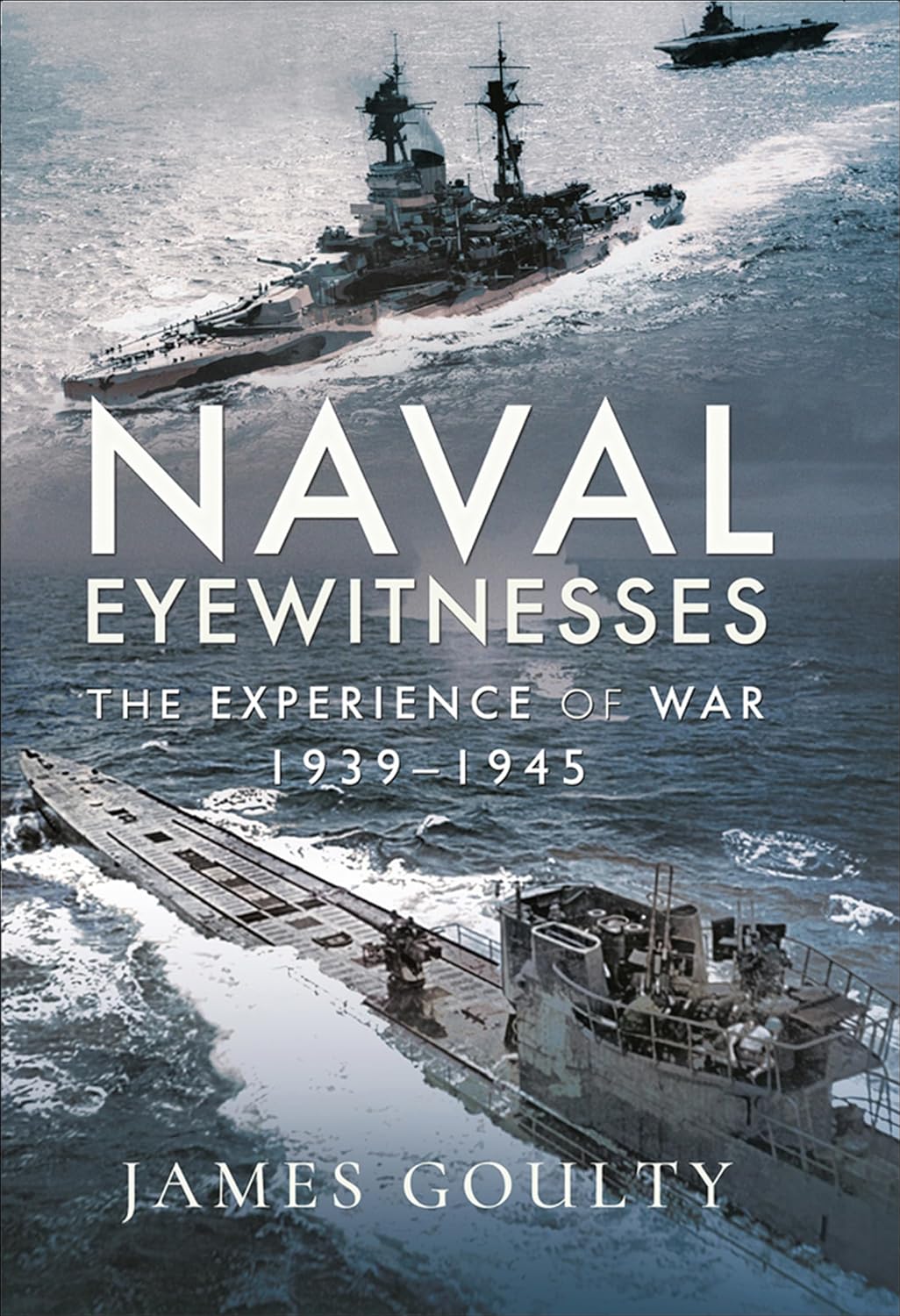Naval Eyewitnesses: The Experience of War 1939 - 1945
By James Goulty

Having already published books on the experiences of airmen and soldiers in the Second World War and Korean War, James Goulty continues to have a special interest in the training and combat experience of ordinary airmen, soldiers, and sailors. In his first chapter, sailors describe how life differed in battleships, cruisers, destroyers, minesweepers, coastal forces, all the way down to motor torpedo boats and even to landing craft. It really shows that sailors could find a style of life that fitted their personalities—from rigid topdown authority to being part of a team.
Next, the author chronicles the history of British naval aviation and aircraft carriers and the sailors' impressions of their aircraft. He explains why British aircraft were not as good as American planes. Training of pilots involved not only learning to fly, but also practicing take-offs from and landing onto a moving ship. Some operational experiences, such as torpedoing Bismarck, attacking the Italian navy at Taranto, and surviving kamikaze attacks, are told by those involved. Life on board submarines, whether large or small, including the even smaller four-crew X-craft and chariots, and their exploits are described in Chapter 3 along with anti-submarine warfare. The latter subject area continues into the next chapter which describes convoy experiences, whether they were in North Atlantic, to Malta, or into the Arctic. Particular mention is made of the disastrous ConvoyPQ-17.
All of Chapter 5 is devoted to amphibious landings, from the learning experiences in 1940 at Dakar, to the small-scale raids by Combined Operations, including HMS Campbeltown’s intentional destruction at St. Nazaire in March 1942,, landings in North Africa in November 1942, on Sicily in July 1943, on mainland Italy in September 1943, at Normandy in June 1944, and even the raids along the coast of Burma during 1945. How landing craft landed at beaches and then extracted themselves after unloading is well described.
To answer the question why choose the Navy, a veteran of the First World War trenches advised his son about the various branches of the armed forces: "Air Force: what goes up must come down; Army: you're cannon fodder; Navy: three-square meals and a dry bed until the ship goes down"
In Chapter 6, the author relates sailors' lives at sea, as well as the experiences of sailors and Wrens (Women’s Royal Naval Service) at shore establishments in terms of welfare, entertainment, rations, food, drink, love, romance, and sex. The author ends the chapter with a short section on the experiences of survivors of sinkings and of prisoners of war. The German name for prisoner of war camps for naval sailors was Marlags and for merchant mariner sailors was Milags.
Chapter 7 concludes the book with descriptions of the demobilization process and sailors' personal reflections on their wartime service.
What is most attractive about the book is the author's comprehensive appreciation of what it was to be a sailor in wartime. Plenty of books describe naval actions, usually in terms of ships doing this or that, possibly featuring the captain or, sometime, a heroic act. Goulty tells the story from the perspective of the ordinary sailor or officer who was there. There is a comprehensive, six-page Timeline covering events from the 1921 Washington Naval Treaty to VJ Day which serves as a useful reference source for future reading.
The book is full of direct quotations from written material, but also from transcripts of oral recordings. The latter can be somewhat disjointed and could have been lightly edited. Thoughtfully, Goulty makes good use of explanations to define what is meant by words or phrases.
- Barnsley: Pen & Sword Maritime, 2022
- 6-1/2” x 9-1/2”, hardcover, xxii + 244 pages
- Photographs, timeline, glossary, notes, bibliography, index. $49.95
- ISBN: 9781399000710
Reviewed by: Helen Jamieson, University of Alabama
